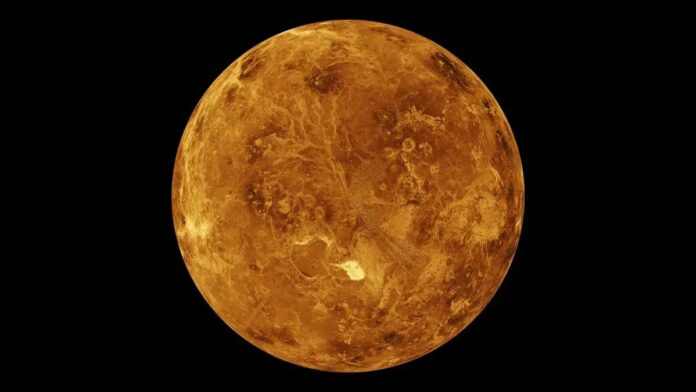Of the terrestrial planets, Venus is the one with the slightest knowledge. Venus shares many parallels with Earth regarding mass and size, but its atmosphere is very different from Earth’s, and there is no record of plate tectonics on Venus’s young surface.
With uncertain outcomes, numerical studies of long-term planetary development have attempted to comprehend Venus’s thermal-tectonic past. Nonetheless, Venus’s atmosphere can serve as a diagnostic for constraining planetary evolution because it is connected to internal growth.
Simulations produced by a Brown-led research team offer evidence that Venus once had plate tectonics. Scientists used atmospheric data from Venus and computer modeling to show the composition of the planet’s current atmosphere.
According to the simulation, an early type of plate tectonics would have been necessary for the surface pressure to exist.
The surface temperature of Venus is so hot that it could melt the lead. One possible explanation is that the planet has always been thought to have what’s known as a “stagnant lid. It means its surface has only a single plate with minimal amounts of give, movement, and gasses being released into the atmosphere.
According to the new report, this was only sometimes the case. Venus had plate tectonics at some point after the planet originated, roughly 4.5 billion to 3.5 billion years ago, scientists believe, to explain the quantity of nitrogen and carbon dioxide found in Venus’ atmosphere. The study argues that similar to Earth, the amount and number of moving plates during this early tectonic movement would have been restricted. Additionally, it would have been taking place concurrently on Venus and Earth.
Matt Weller, the study’s lead author, said, “One of the big picture takeaways is that we very likely had two planets at the same time in the same solar system operating in a plate tectonic regime — the same mode of tectonics that allowed for the life that we see on Earth today.”
This highlights the possibility of microbial life on ancient Venus. It also shows that the two planets- Venus and Earth- were more alike than previously thought before diverging.
Study co-author Alexander Evans, an assistant professor of Earth, environmental and planetary sciences at Brown, said, “The work also highlights the possibility that plate tectonics on planets might just come down to timing — and therefore, so may life itself.”
“We’ve so far thought about tectonic state in terms of a binary: it’s either true or false, and it’s either true or false for the duration of the planet. This shows that planets may transition in and out of different tectonic states and that this is fairly common. Earth may be the outlier. This also means we might have planets that transition in and out of habitability rather than just being continuously habitable.”
After that, the scientists ran simulations to see what would have to happen for the planet to reach its current state. Eventually, when they explained the minor tectonic activity that occurred early in Venus’ history and the current stationary lid model, they matched the numbers almost wholly.
Overall, the work establishes the viability of atmospheres and their potential to shed light on historical events.
Evans said, “We’re still in this paradigm where we use the surfaces of planets to understand their history. We show for the first time that the atmosphere may be the best way to understand some of the very ancient histories of planets that are often not preserved on the surface.”
Journal Reference:
- Weller, M.B., Evans, A.J., Ibarra, D.E. et al. Venus’s atmospheric nitrogen is explained by ancient plate tectonics. Nat Astron (2023). DOI: 10.1038/s41550-023-02102-w
